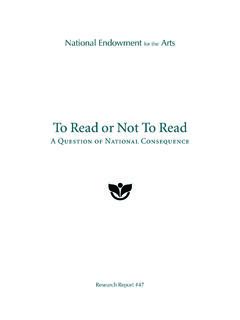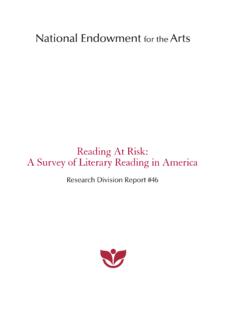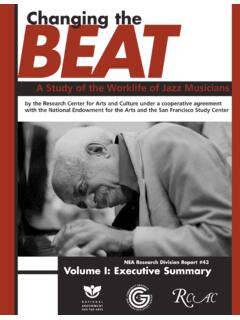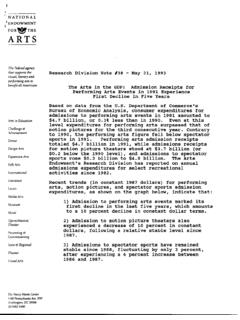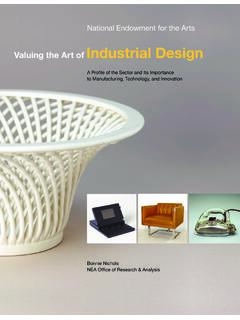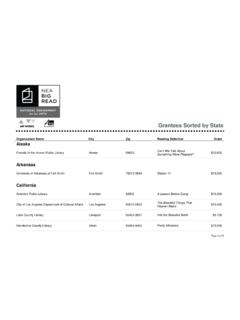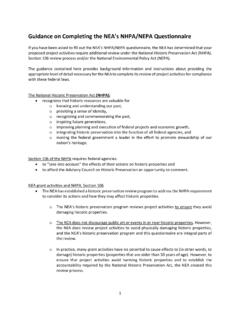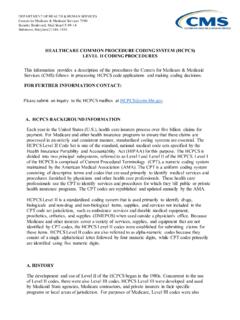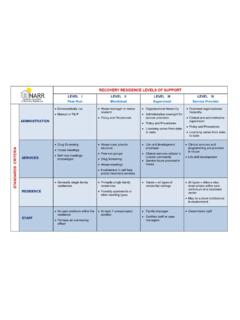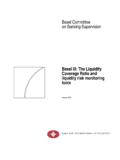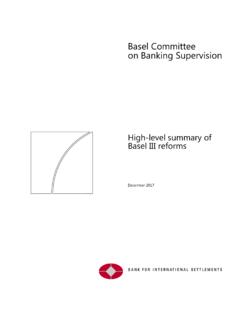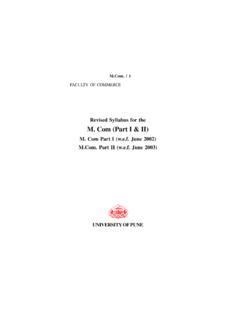Transcription of Revised Regulations of the Americans with Disabilities Act ...
1 National Endowment for the Arts Office of Accessibility 2010 Revised Regulations of the Americans with Disabilities Act Titles II and III. INTRODUCTION. On September 15, 2010, the United States Department of Justice (DOJ) published Revised Americans with Disabilities Act (ADA) Regulations in the Federal Register that update and amend some of the provisions in the original 1991 ADA Regulations . These changes include Revised accessibility standards, called the 2010 Standards for Accessible Design (2010. Standards), which establish minimum criteria for accessibility in design and construction.
2 This tipsheet highlights some of the revisions that have a specific effect on cultural venues, such as theaters or museums. It is not intended to be comprehensive. To view the Revised Regulations in their entirety with guidance, please see these two definitive resources: Department of Justice at Access Board at The material contained herein was drawn from or excerpted from both of these resources. WHO IS IMPACTED BY THE NEW Regulations ? The Revised Regulations apply to the following entities, which have until March 15, 2011, to comply: State and Local Governments (ADA Title II, 28 CFR, Part 35).
3 This includes any non-federal department, agency, district, or instrumentality of a State or local government. For example: State arts commissions and councils, city-owned or -operated cultural centers, recreational venues and parks, libraries, state colleges, and universities. Places of Public Accommodation (ADA Title III, 28 CFR, Part 36). This includes any facility operated by a private, non-governmental entity and open to the public. For example: Theaters, museums, concert halls, arts and performing arts centers, stadiums, private colleges and universities, lecture halls, galleries, parks, zoos, other places of exhibition or entertainment, and assembly areas.
4 2010 Revised Regulations Page: 1. WHAT HAS CHANGED THE MOST? At least two areas in the Revised Regulations merit attention from cultural arts administrators: 1) Policies, Procedures, and Practices i) Service animals ii) Mobility devices iii) Ticketing 2) Physical Access and Barrier Removal i) 2010 Standards ii) Safe Harbor iii) Reduction of Elements POLICIES, PROCEDURES AND PRACTICES. DEFINITION: SERVICE ANIMAL. A service animal is now defined as any dog* individually trained to do work or perform tasks benefitting an individual with a disability, including a physical, sensory, psychiatric, intellectual, or other mental disability.
5 * There is a limited exception for miniature horses. FIND IT IN THE Regulations : State and Local Governments: definition and service animals Places of Public Accommodation: definition and (c) service animals DEFINITION: MOBILITY DEVICES. The definition of mobility devices has expanded to include not only traditional devices, such as wheelchairs and scooters, but any power-driven mobility devices used by a person with a mobility disability including, but not limited to, Segways. All such devices must be permitted in any area that pedestrians use unless it would result in a fundamental alteration, is a direct threat, or creates a safety hazard.
6 FIND IT IN THE Regulations . State and Local Governments: definition and mobility devices Places of Public Accommodation: definition and mobility devices 2010 Revised Regulations Page: 2. TICKETING. The Revised Regulations include a new eight-part section devoted exclusively to the regulation of ticketing for wheelchair spaces and companion seats. The highlights of the new ticketing Regulations include, but are not limited to, the following requirements: 1) Tickets for accessible seating must be available for purchase during the same times and in the same ways as the purchase of other tickets.
7 2) Accessible seating must be identified to the same level of specificity as other seats on maps, seating charts, and brochures, and, if asked, the location of all available accessible seating must be identified;. 3) Tickets for accessible seating must be available at all price levels ;. 4) A wheelchair user may purchase up to three companion seats that are contiguous and in the same row so long as such seats are available and all patrons may purchase that number of seats;. 5) Accessible seating may only be released when all other tickets are sold out or all other tickets in a specific price range or area are sold out.
8 6) Individuals with Disabilities must be able to transfer their tickets to others under the same terms and conditions as other ticket holders;. 7) Venues must honor tickets for non-accessible locations purchased on the secondary market ( tickets that are re-sold by the original purchaser) by a wheelchair user so long as comparable accessible seats are available at the time the ticket is presented;. 8) Venues may not ask for proof of disability or ask what the individual's specific disability is, but may ask if the individual is purchasing tickets for someone with a mobility disability.
9 The venue may investigate if it has reason to believe fraud has been committed. FIND IT IN THE Regulations . State and Local Governments: ticketing Places of Public Accommodation: (f) ticketing 2010 Revised Regulations Page: 3. PHYSICAL ACCESS AND BARRIER REMOVAL. 2010 STANDARDS FOR ACCESSIBLE DESIGN. The 2010 ADA Standards for Accessible Design (2010 Standards) were published in the Federal Register on September 15, 2010, and will become mandatory after 18 months. In the period between September 15, 2010, and March 15, 2012: Places of public accommodation may choose between compliance with the 1991 ADA.
10 Standards or the 2010 Standards. State and local governments may choose between compliance with the 1991 ADA. Standards, the Uniform Federal Accessibility Standards (UFAS), or the 2010 Standards. On and after March 15, 2012, the standards mentioned above will be replaced by the 2010. Standards, which become mandatory and enforceable, and must be applied to all new construction, renovations, modifications, alterations, and barrier removal. EXAMPLE. A non-profit theater is planning two major renovations. The first renovation is currently in the design phase, is scheduled to start construction April 2011, and will be completed in April 2012.
